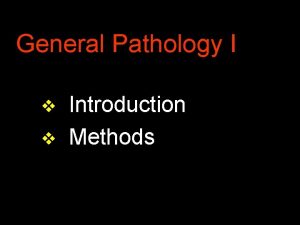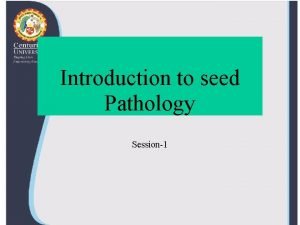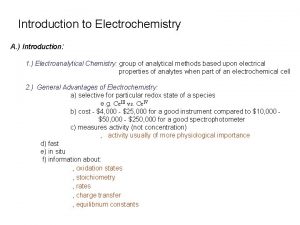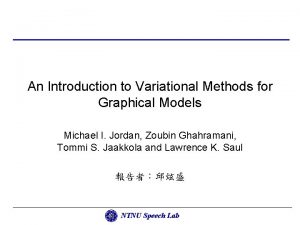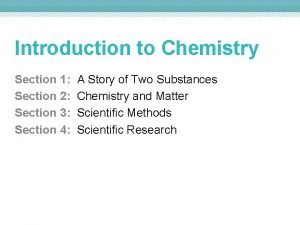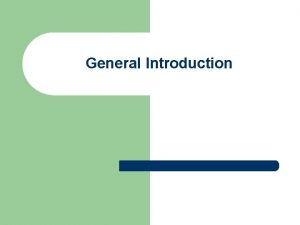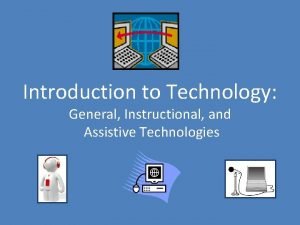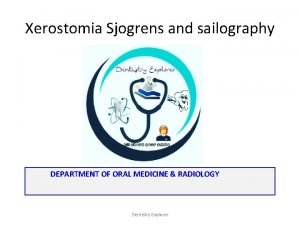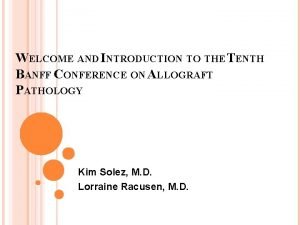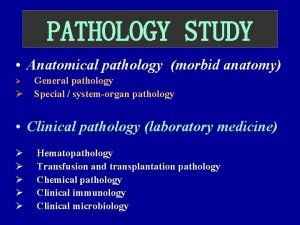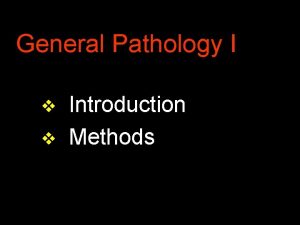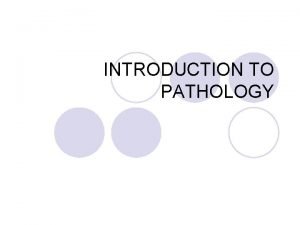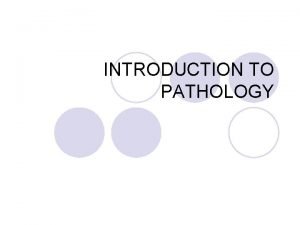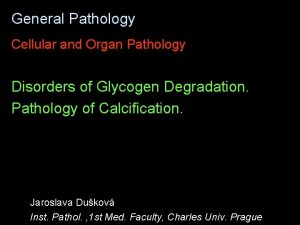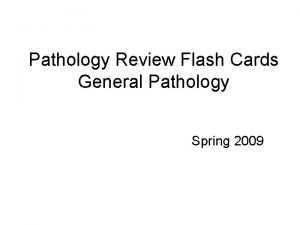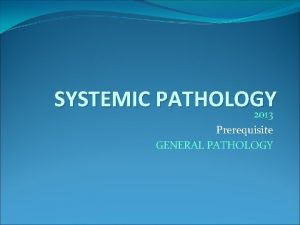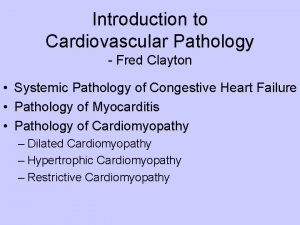General Pathology I v v Introduction Methods Pathology

















- Slides: 17

General Pathology I v v Introduction Methods

Pathology science on diseases – causes (etiology) – mechanisms of formation (pathogenesis) – development (prognosis)

Pathology v v general special – organ – nosological (nosos= illness)

Methodology of Pathology Observation subject u necropsy (autopsy) biopsy cytology u experiment u u – animals – tissue cultures

Methodology of Pathology Observation level u u u macroscopy microscopy ultrastructure Special methods u histochemistry u immunohistochemistry u quantitative (computer) image analysis u genetic methods – FISH, PCR, CGH, …

Autopsy u After v the 2 nd world war standing decrease abroad < 10%, Czech Rep. < 50% u Aims – clinicopathological diagnosis – cause of death – dg. errors – therapy effects assessment – data on old and new diseases – teaching – event. medicolegal aspects of death

Autopsy dissection method unchanged since the end of 19 th century u changes in taking material for special methods & their employment to cope with clinical questions u

Clinicopathological Diagnosis u Morbus principalis Complicationes Causa mortis Inventus accesorius u Epicrisis u u u

Biopsy u After the 2 nd world war standing increase u Aims – nosological diagnosis – tumour pathology – – staging, grading evaluation of therapy efficiency

„Classical“ Biopsy (formol paraffin technique) u u simple may be done in two days immuno reactions two days more further sectioning two days more oncol. dg. - WHO classification

Peroperation Biopsy. Frozen section u u reported DURING MINUTES !!! morphological artefacts (combination with cytology) limited extensity of investigation limited time

Cytology u After the 2 nd world war standing increase u Aims – screening – nosological diagnosis – evaluation of therapy efficiency

Morphological Diagnostic Methods v Clinical v Pathological

Morphological Diagnostic Methods v Clinical: v macroscopy of lesions v visible with the naked eye invisible with the naked eye IMAGING (X-ray, sonography, scintigraphy, endoscopy, CT, …) v v magnifying glass - colposcopy

Morphological Diagnostic Methods v Pathological v macroscopy v microscopy v ultrastructure v IMAGING

Morphometric Investigations objectivisation & refinement of diagnostic methods staging (e. g. malignant melanoma) grading (e. g. kidney carcinoma)

Pathology an extremely exciting medical specialty helping to understand & treat the diseases via diagnostic service for all other specialties
 Pathway pansitopenia
Pathway pansitopenia Indirect wax pattern
Indirect wax pattern Seed pathology notes
Seed pathology notes Diferencia entre gran plano general y plano general
Diferencia entre gran plano general y plano general Where did general lee surrender to general grant?
Where did general lee surrender to general grant? Introduction to electroanalytical methods
Introduction to electroanalytical methods An introduction to variational methods for graphical models
An introduction to variational methods for graphical models Introduction methods results discussion conclusion
Introduction methods results discussion conclusion Introduction to chemistry section 3 scientific methods
Introduction to chemistry section 3 scientific methods Introduction to general phonetics and phonology
Introduction to general phonetics and phonology General insurance introduction
General insurance introduction General introduction
General introduction Introduction about technology in general
Introduction about technology in general Sailography
Sailography Seed pathology definition
Seed pathology definition Banff pathology course
Banff pathology course Pathology job market
Pathology job market Pathology outline
Pathology outline
